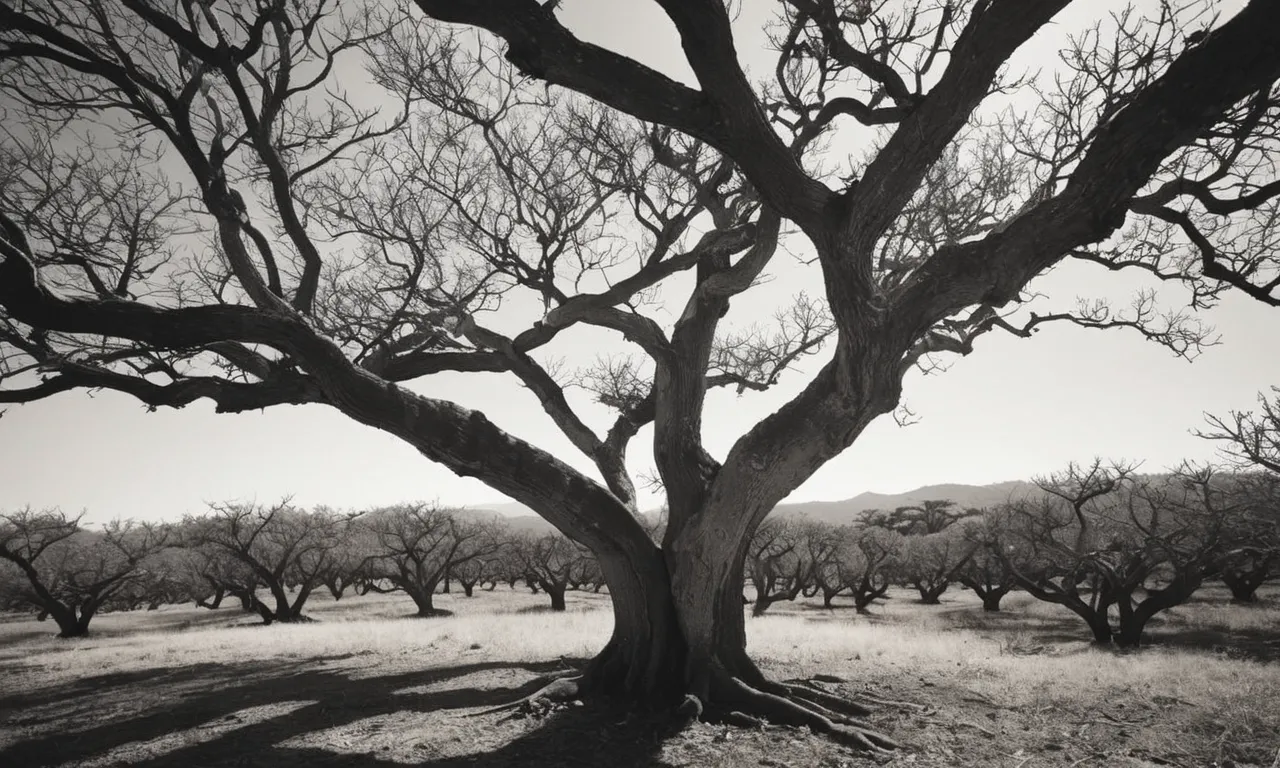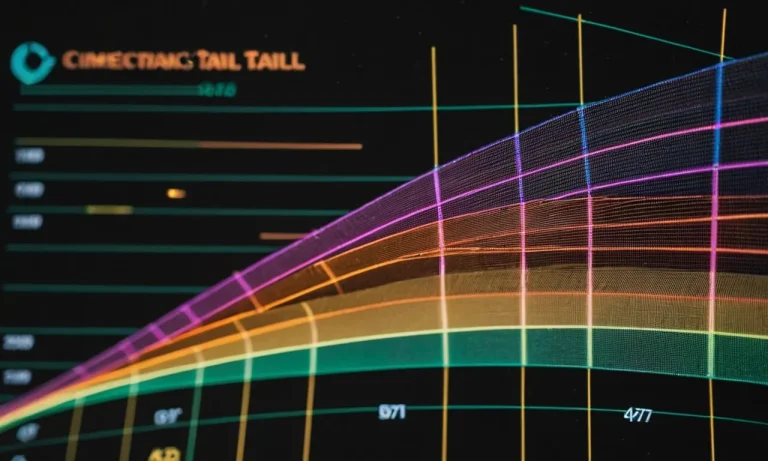Why Did Jesus Curse The Fig Tree? An In-Depth Examination
The story of Jesus cursing the fig tree is one of the more puzzling passages in the New Testament. At first glance, it may seem out of character for Jesus to curse a tree for not bearing fruit. However, when examined more closely, this act carries deep symbolic meaning that provides insight into Jesus’s mission and message.
If you’re short on time, here’s a quick answer: Jesus cursed the fig tree as a symbolic demonstration that the faithless religious leaders and people of Israel would soon be judged for rejecting him as the Messiah.
In this comprehensive article, we will examine the context, significance, and meaning behind Jesus cursing the fig tree. We will explore the Old Testament background, analyze the Gospel accounts, and explain the rich symbolism behind this cryptic act.
The Context: Jesus’ Actions Prior to Cursing the Fig Tree
Jesus’ Triumphal Entry into Jerusalem
The story of Jesus cursing the fig tree comes right after his triumphal entry into Jerusalem. This was one of the most important events of Jesus’ earthly ministry, where he rode into Jerusalem on a donkey as crowds welcomed him by waving palm branches and shouting “Hosanna!
“, fulfilling Old Testament prophecy about the Messiah (Zechariah 9:9). The crowds treated Jesus like a conquering king, showing that many believed he was the promised Messiah who would deliver Israel from Roman oppression. So Jesus’ authority was on full display here.
But there was also rejection brewing. The religious leaders were indignant and threatened by Jesus’ popularity and miracles. They wanted to destroy him, fearing he would upset the status quo of their power and position.
So while Jesus was praised by the crowds, he knew the cross was coming as the religious leaders plotted against him. The triumphal entry set the stage for the fig tree episode.
Jesus Driving Money Changers from the Temple
After his triumphal entry, Jesus went to the temple and drove out the money changers and merchants who had set up shop there, overturning their tables in righteous anger (Matthew 21:12-13). He accused them of turning God’s house into a den of robbers through their extortion of the people.
This provocative action was a very public demonstration of Jesus’ authority over the temple and his opposition to the corruption and greed that had infected Jewish worship.
The religious leaders would have been livid about this disruption to their lucrative money making scheme. They likely wanted to kill Jesus right then and there. So this defiant display of Jesus’ zeal for God’s house poured fuel on the fire of the religious leaders’ hatred.
Jesus was demonstrating his messianic authority both over the temple and in opposition to the religious establishment of the day.
So right before cursing the fig tree, Jesus had stirred up immense conflict with the religious leaders in Jerusalem through his triumphal entry and temple action. The fig tree episode must be understood in this context of Jesus displaying his authority as the Messiah and provoking his opponents through obedient words and actions.
Examining the Gospel Accounts of Jesus Cursing the Fig Tree
The Fig Tree Incident in Mark’s Gospel
In Mark 11:12-14, as Jesus was walking from Bethany to Jerusalem, he saw a fig tree in leaf. Since fig trees normally produce figs along with the leaves, Jesus went to check if there were any figs on the tree.
Finding no figs but only leaves, Jesus cursed the fig tree saying, “May no one ever eat fruit from you again.” The next day as Jesus and his disciples passed by, they saw the fig tree withered from the roots (Mark 11:20-21).
This incident occurs right after Jesus’ triumphal entry into Jerusalem and right before he cleansed the temple. The cursing and withering of the fig tree foreshadowed the coming judgment on Israel and cleansing of the temple, which had become spiritually barren.
Matthew’s Version of the Fig Tree Incident
Matthew’s account (Matthew 21:18-22) is similar but has some differences. Jesus cursed the fig tree immediately causing it to wither, and the disciples only noticed it had withered the next day. Matthew leaves out the detail of it not having figs but only leaves.
He also adds Jesus’ teaching on the power of faith right after.
Matthew was highlighting the supernatural nature of the event, showing Jesus’ divine authority. The immediacy of the tree withering illustrated the power of God’s judgment. Matthew also connected the incident to Jesus’ teaching on faith and prayer.
Comparing the Differences Between the Accounts
While both authors relate the same incident, there are some slight differences:
- Mark provides more details about the tree having leaves but no figs, which sets up Jesus’ cursing.
- In Matthew, the fig tree withers immediately after Jesus curses it, while in Mark it withers overnight.
- Matthew includes the teaching about the power of faith right after; Mark does not.
These differences can be explained by the different purposes and themes of each gospel. Mark emphasized Jesus’ authority and divine judgment. Matthew highlighted Jesus’ supernatural power and the importance of faith connected to the event.
But both affirm Jesus’ divine identity through this prophetic sign and use it to teach spiritual truths about faith, prayer, judgment, and the temple.
Significance and Symbolism of Fig Trees in the Old Testament
Fig Trees Representing Israel
In the Old Testament, fig trees were often used as symbols representing the nation of Israel. For example, in Jeremiah 24, God shows Jeremiah two baskets of figs – one basket containing good figs representing the exiled people of Judah, and the other containing bad figs representing those left behind in Jerusalem.
The quality of the figs and their edibility reflected Israel’s spiritual condition and relationship with God.
Producing Fruit Symbolizing Spiritual Health
Fig trees producing good fruit symbolized Israel’s spiritual health and prosperity when they obeyed God. Psalms 105:33 says, “He struck down their vines and fig trees and shattered the trees of their country.”
God’s judgment on disobedient Israel involved destroying fig trees representing national stability.
Conversely, prophets like Micah looked forward to future peace and prosperity in Israel with images like “every man will sit under his own vine and under his own fig tree, and no one will make them afraid” (Micah 4:4). Fruitful fig trees represented spiritual renewal.
Barrenness Equated with God’s Judgment
When Israel turned from God, prophets like Jeremiah, Hosea, and Joel warned them that God’s judgment would make their fig trees barren (e.g. Jeremiah 8:13). As a key food source in ancient Israel, the lack of figs pointed to covenant curses and divine discipline.
One vivid example is Jesus cursing the barren fig tree in Mark 11:12-25, symbolizing Jerusalem’s spiritual barrenness. So in biblical times, fig tree barrenness represented Israel’s fruitlessness in terms of righteousness and justice as they broke covenant with God.
The Deeper Meaning Behind Jesus Cursing the Fig Tree
A Prophetic Sign Against Faithless Israel
Jesus cursing the barren fig tree was a sobering prophetic sign against faithless Israel. Though having leaves, the tree bore no fruit when Jesus sought some. This represented Israel’s spiritual barrenness – an outward appearance of religion but inwardly lacking the fruit God sought (Luke 13:6-9).
Just as the fig tree withered under Jesus’ curse, God’s judgment would soon fall on rebellious Israel.
God’s Judgment on Spiritual Barrenness
The fig tree incident illustrates God’s displeasure with spiritual barrenness. Like the fruitless fig tree, many people look spiritually alive but fail to produce spiritual fruit – Christlike character, righteousness, and good works (Galatians 5:22-23).
Such spiritual barrenness often stems from hardened hearts, sinful rebellion, hypocrisy, and lack of true faith in God. Ultimately it leads to judgment.
Jesus taught much about spiritual fruitfulness. He said a tree is known by its fruit (Matthew 7:15-20) and that fruitless branches will be cut off and burned (John 15:1-6). The lesson: God desires and expects fruit from those who belong to Him.
Like the cursed fig tree, spiritual barrenness leads to disaster.
Jesus’s Authority Over Creation
The fig tree incident also displays Jesus’ authority over creation. At His word, the tree instantly withered. This foreshadowed His victory over sin and death at the cross. It also anticipates His return to judge the world in righteousness.
The cursed fig tree is a warning that Jesus has authority over all creation and will judge spiritual barrenness.
Those belonging to Christ must actively abide in Him, not just appear religious outwardly. He expects spiritual fruit, not leaves only. And as Lord of creation, Jesus warns that a lack of genuine fruit in keeping with repentance will ultimately face His righteous judgment (Matthew 3:8-10).
Later References to the Fig Tree Incident in the Gospels
Jesus on the Power of Faith Over Nature
In Matthew 21, Jesus curses the barren fig tree, causing it to instantly wither. This miraculous event is referenced again later in the Gospels, providing further insight into its meaning and significance.
In Matthew 17:14-21, Jesus heals a boy with a demon, but his disciples had failed to do so. Jesus explains it was “because of your unbelief,” saying that with faith as small as a mustard seed, they could move mountains. This illustrates the power of faith over nature, as with the fig tree.
Similarly, in Mark 11:20-25, Jesus references the fig tree in his teaching on the power of prayer with faith. He says if one believes when they pray, they will receive whatever they ask for. The fig tree obeyed Jesus’ words instantly because of his complete faith.
In both passages, Jesus uses the fig tree incident to demonstrate that with faith, one can do the seemingly impossible, like making a tree instantly dry up. Our faith and prayers have power over the natural world.
The Parable of the Fig Tree as an End Times Sign
The fig tree is also referenced eschatologically as a sign of the end times. In Matthew 24:32-35, Mark 13:28-31, and Luke 21:29-33, Jesus tells the Parable of the Fig Tree.
He says when you see a fig tree sprouting leaves, you know summer is near. Likewise, when the end times events described occur, you will know his return is imminent.
The budding fig tree represents Israel’s rebirth – established again as a nation in 1948 after nearly 1900 years of exile. This could indicate Jesus’ return is close.
Some scholars, like Dr. Michael Brown of AskDrBrown Ministries, interpret the fig tree parable combined with the timeline in Daniel 9 as evidence that the end times began in 1948 when Israel was restored as a nation.
The fig tree that Jesus cursed may foreshadow Israel temporarily losing its homeland, while his parable of the budding fig tree signals the end times beginning when Israel is reborn as a country.
Conclusion
In conclusion, Jesus cursing the barren fig tree served as a dramatic prophetic sign that judgment would soon fall on Israel for rejecting their Messiah. By analyzing the context, Old Testament symbolism, and Gospel accounts, we gain insight into the rich layers of meaning behind this jarring act.
Ultimately, the fig tree incident displays Jesus’s authority and reveals his zeal for bearing spiritual fruit in a faithless generation.








